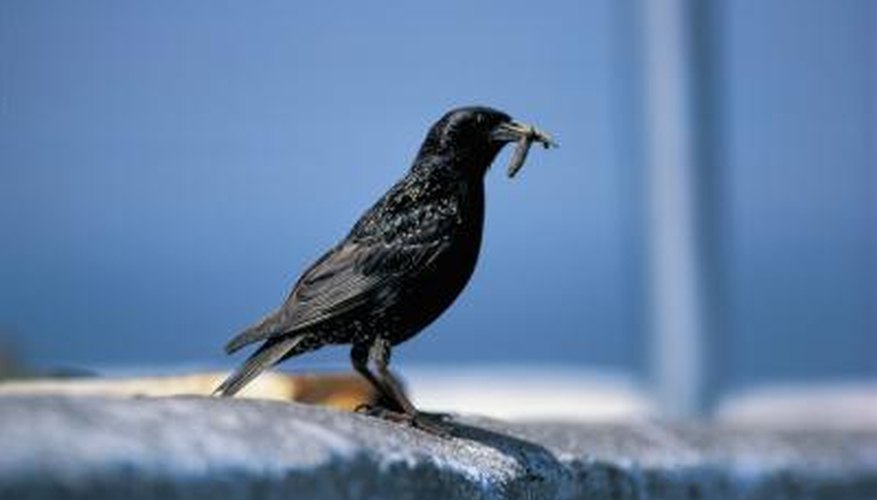Not all holes in the lawn are signs of pests that cause damage to the landscape. A variety of animals and insects can leave holes in the lawn that may range from barely discernible to quite large and unsightly. Determining what creature is creating the holes is the first step in protecting your lawn grass and landscape plants from damage.
Small Holes
Tiny holes that appear pressed into the ground, rather than dug out, are most likely the result of birds searching for food. Earthworms leave small, granular pellets around the openings of holes they burrow, while certain insects, such as wasps, cicadas, bees and beetles, also leave small holes in the lawn. Some of these may have small mounds nearby that consist of fecal pellets or loose soil. While some bugs create holes in the soil for their living quarters, others make the holes to lay eggs.
- Tiny holes that appear pressed into the ground, rather than dug out, are most likely the result of birds searching for food.
Large Holes
Small mammals are the most likely cause of larger holes in the garden, lawn and landscape. Squirrels commonly dig holes in the soil to store their nuts, while skunks and raccoons dig holes in search of food. Rats and chipmunks sometimes dig holes in the ground for living quarters, usually near piles of dead wood or tree trunks.
Tunnels
Tunnelling animals can pose a hazard to your entire lawn. Moles, gophers and groundhogs create large underground networks of tunnels, often eating through underground roots, bulbs and tubers. These burrowing animals leave piles of dirt around the holes and can create raised areas across your lawn. Gophers and groundhogs leave lopsided mounds of dirt while moles crate circular mounds with holes in the centre that resemble volcanoes.
- Tunnelling animals can pose a hazard to your entire lawn.
- These burrowing animals leave piles of dirt around the holes and can create raised areas across your lawn.
Treatment
Worms help increase the porosity and nutrient level of the soil, making them a helpful type of inhabitant in lawns and landscapes. Likewise, insects that don't feed on grass or landscaping plants may not require treatment, unless you simply don't like the thought of these bugs in your grass. Pesticides labelled for use on the invading species can help minimise the holes in your lawn. Getting rid of mammals that cause large holes and extensive damage can be a difficult task. Although traps, poisonous gas and bait can help eradicate these pests, they are dangerous and require regular monitoring. A professional pest control is often the safest and most effective way of removing moles, gophers and groundhog colonies.
- Worms help increase the porosity and nutrient level of the soil, making them a helpful type of inhabitant in lawns and landscapes.
- Pesticides labelled for use on the invading species can help minimise the holes in your lawn.
